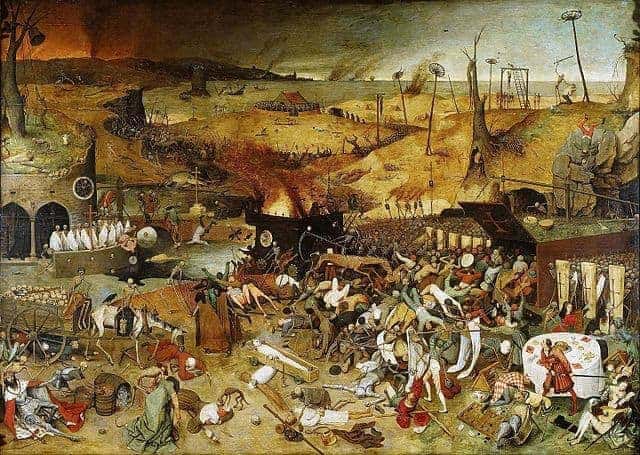Throughout human history, illness has ravaged populations. Both viral and bacterial illnesses can spread rapidly from person-to-person or from animal carriers to people. When a disease becomes an epidemic, or a widespread occurrence across the population or a pandemic, when an epidemic illness spreads over a large geographical area, the disease can not only reduce populations, but cause significant social and economic changes.
When a population drops dramatically, by 20, 30 or 40 percent, the labor force becomes smaller, and food supplies ample. Political and military instability may result. Conditions can even improve for those left behind. While these changes can weaken empires, they can also lead to positive changes—like the eventual birth of the Renaissance in Medieval Europe.

Plague of Athens, 430 to 426 BCE
The Plague of Athens decimated the city in the second year of the Peloponnesian War, destroying Athenian hopes of victory. The plague almost certainly entered the city through the port of Piraeus, having begun in Sub-Saharan Africa and moved along trade routes. Smaller outbreaks occurred throughout the Eastern Mediterranean. The plague recurred several times over the next few years, in 429 and the winter of 427 to 426 BCE.
While traditionally this was believed to have been one of the first outbreaks of bubonic plague, more recent research into the symptoms has suggested other causes. The descriptions provided by classical writers suggest measles, smallpox or typhus. A DNA analysis of tooth pulp of three victims of the plague of Athens has shown genetic evidence of typhoid fever; however, the symptoms of typhoid fever do not effectively match the descriptions of the plague.
Other scholars have suggested, based on descriptions of the illness and the level of contagion, that it was a sort of hemorrhagic fever, not unlike Ebola. Some authors describe bloody or black discharge from the mouth, nose and eyes. A few scholars have even suggested that this was an early outbreak of Ebola.
In total, the plague of Athens killed between one-third and two-thirds of the population of Athens. Most of those infected died, typically within seven to nine days of showing symptoms of the illness. The city was overcrowded, leading to rapid spread of the illness from one person to another. Before the plague struck, the population of Athens was between 250,000 and 300,000. The death toll of the plague of Athens may well have reached nearly 200,000 people.

